There can be your advertisement
300x150
Stalin-era Apartments in Cinema: Which Legendary Buildings Featured in 'Moscow Does Not Believe Tears' and 'Love and Pigeons'
On the Role of Stalin-era Apartments in Soviet Cinema
"Beauty!" — Ivan the Terrible exclaimed while looking at Moscow from a balcony. Soviet filmmakers knew: when it was time to show a beautiful life, shoot in Stalin-era high-rises. These monumental buildings became true screen stars, on par with actors.
Vladimir Menshov in 'Moscow Does Not Believe Tears' arranged a real "rebirth" for the heroines — they enter one high-rise, but end up in another. Nobody noticed the trick! But everyone clearly understood: if a character lives in a Stalin-era building, they have succeeded in life.
Main Points from the Article:
- In 'Moscow Does Not Believe Tears', the heroines enter the high-rise on Kudrinskaya Square, but the interiors were filmed in a house on Kotel'nicheskaya Embankment;
- Katya Tikhomirova lives in "general's" houses on Mosfilmovskaya Street, 11 — a symbol of wealth in the 70s;
- 'Love and Pigeons' has no Stalin-era high-rises — Menshov consciously chose simple wooden architecture of Karelia;
- The house on Kotel'nicheskaya became a "star" of many films — from 'Pokrovsky Gates' to 'Brother 2';
- The house on Kudrinskaya was called the "Aviator's House" — it housed the entire spectrum of Soviet aviation industry.
Cinematic Illusion: One Door, Two Houses
Remember how Katya and Lyudochka enter the high-rise building? The door opens on Kudrinskaya Square, but the hallway is already on Kotel'nicheskaya Embankment! Menshov "glued" two different buildings into one.
The "Aviator's House" on Kudrinskaya looked more impressive from the outside — it was where constructors and heroes of the USSR lived. The recognizable panels above the elevators were filmed in a different high-rise. Two houses, one dream: to live in elite housing.
As Lyudochka said: "This is life!" — and indeed, for girls from the countryside, an apartment in a Stalin-era building was the ultimate dream. Such housing was only available to the chosen few.
Kotel'nicheskaya: From Professors to New Russians
The house on Kotel'nicheskaya is a real star of Soviet cinema. The ground floor had its own world: post office, gourmet shop, hairdresser, even a cinema! Residents could stay in the house for weeks without leaving.
Here lived the parents of Rita from 'Pokrovsky Gates'. "I warmly welcome you!" — any character could say this when entering such an apartment. In the 90s, a heroine of Saltykova’s 'Brother 2' lived in the same high-rise — times changed, but prestige remained.
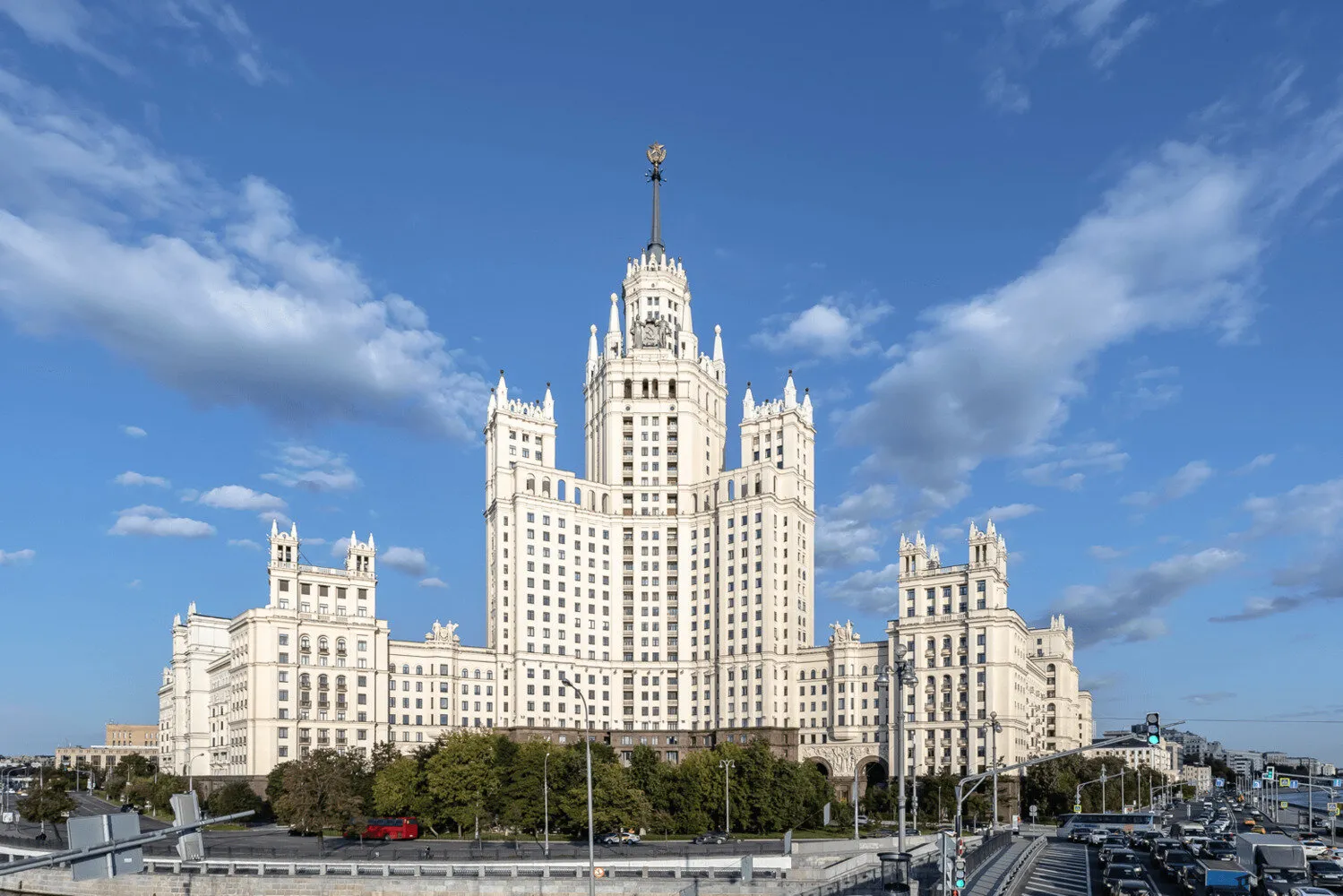 Photo from moskultura.ru
Photo from moskultura.ru"Life Only Begins at 40": Elite Housing on Mosfilmovskaya
Twenty years later, Katya runs out of the entrance on Mosfilmovskaya Street, 11 — "general's" houses for the party elite. These brick beauties were built specifically for directors of factories and high-ranking officials.
Relocating from communal apartments to elite housing — a clear story of success. Director Menshov knew: show an apartment, and the audience immediately understands who’s in front of them. "Statistics knows everything!" — as Novosel'tsev said, and architecture in cinema knew even more about the characters.
"Lyudk, Lyudk!" — When Stalin-era Apartments Mean Nothing
In 'Love and Pigeons', Menshov completely avoided high-rises. "Vasek, are you there?" — these heroes clearly weren’t from elite housing!
The Kuzyakins’ house was found in Medvezhyegorsk, Karelia, on Lower Street, 12. No monumentality — just a simple wooden house by the river. The pigeon coop was built specifically for filming, then gifted to the owners.
"What’s wrong with you? Did you go crazy?" — Vasiliy might have said, seeing a Stalin-era high-rise. But the film proved: happiness is not in luxurious apartments, but in simple human relationships.
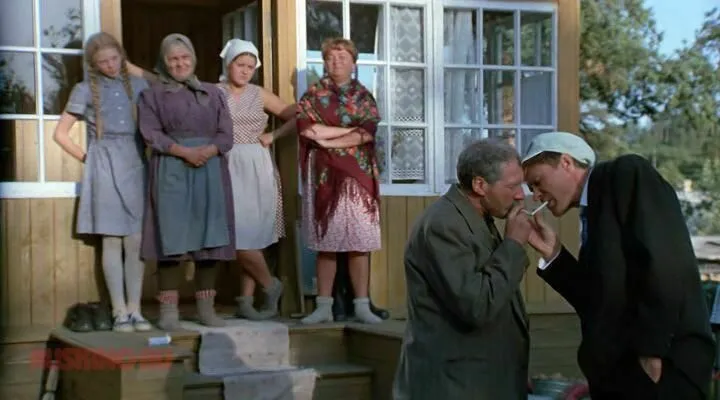 Photo from m.imdb.com
Photo from m.imdb.comHouse as a Character
In Soviet cinema, Stalin-era high-rises were not just beautiful backdrops — they told entire stories. Living in a high-rise meant you were elite. Dreaming of a high-rise meant aspiring to success. Simple and clear.
"Excuse me for disturbing you while hiding your money," — the uncle Mitya joked in 'Love and Pigeons'. But money really did open doors to the best homes. Directors skillfully used this: show an apartment, and the character’s personality is clear without a word.
Stalin-era high-rises in cinema are an encyclopedia of Soviet dreams. Even today, they take your breath away, just like the heroines of Menshov: "Oh my God, what beauty!"
Photo cover from ria.ru
More articles:
 Stylish furniture, dishes and textiles: 10 trendy finds
Stylish furniture, dishes and textiles: 10 trendy finds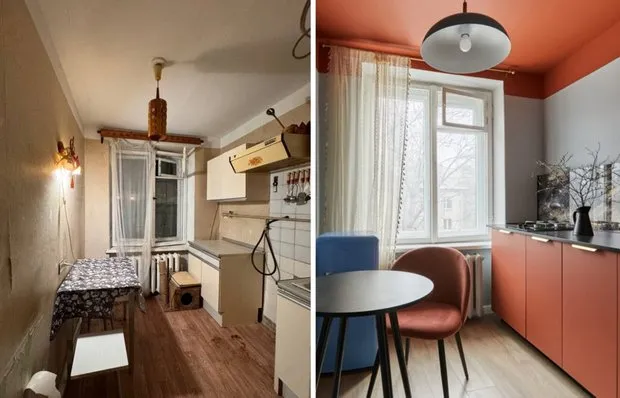 Before and After: Stunning Transformation of a 'Bored' Kitchen in a Brezhnev-Era Apartment
Before and After: Stunning Transformation of a 'Bored' Kitchen in a Brezhnev-Era Apartment 9 Classy Design Solutions Inspired by a 47 m² Studio Apartment
9 Classy Design Solutions Inspired by a 47 m² Studio Apartment Small Entryway Won't Be a Problem Anymore: Designer Tips for 3 sq. m
Small Entryway Won't Be a Problem Anymore: Designer Tips for 3 sq. m How to Transform a 75 m² Bare Cottages into a Cozy Country Cottage on a Budget
How to Transform a 75 m² Bare Cottages into a Cozy Country Cottage on a Budget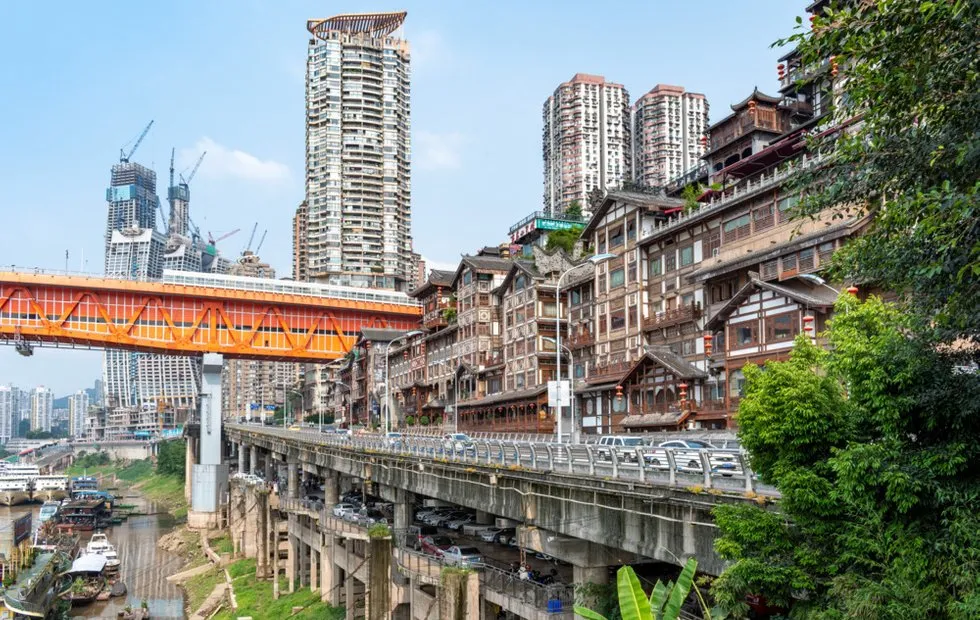 Secrets of Chongqing: The Most Unexpected Facts About This Multi-Level City That Will Shock You
Secrets of Chongqing: The Most Unexpected Facts About This Multi-Level City That Will Shock You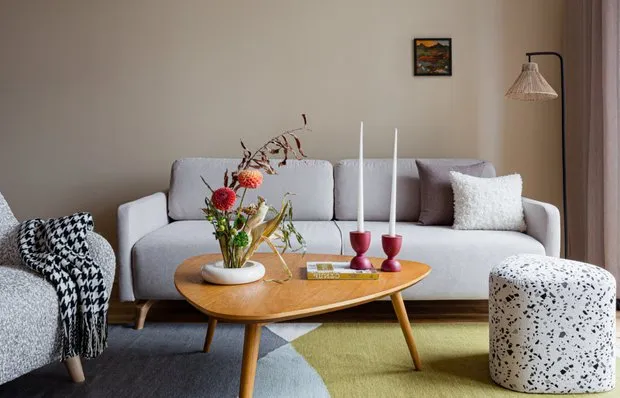 Soft Furniture for Home: Top-10 Trendy New Arrivals
Soft Furniture for Home: Top-10 Trendy New Arrivals Abandoned Paradise: What Hides the Island of Hasingama, Left Behind 50 Years Ago
Abandoned Paradise: What Hides the Island of Hasingama, Left Behind 50 Years Ago